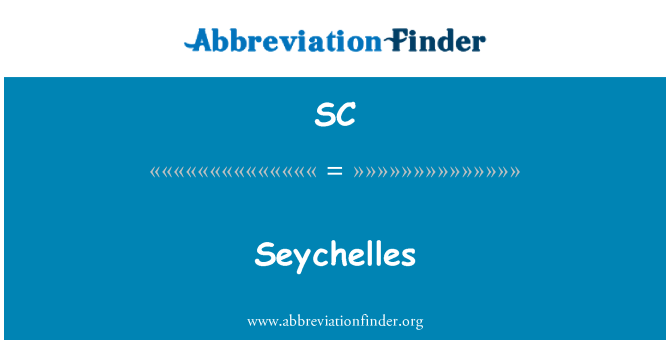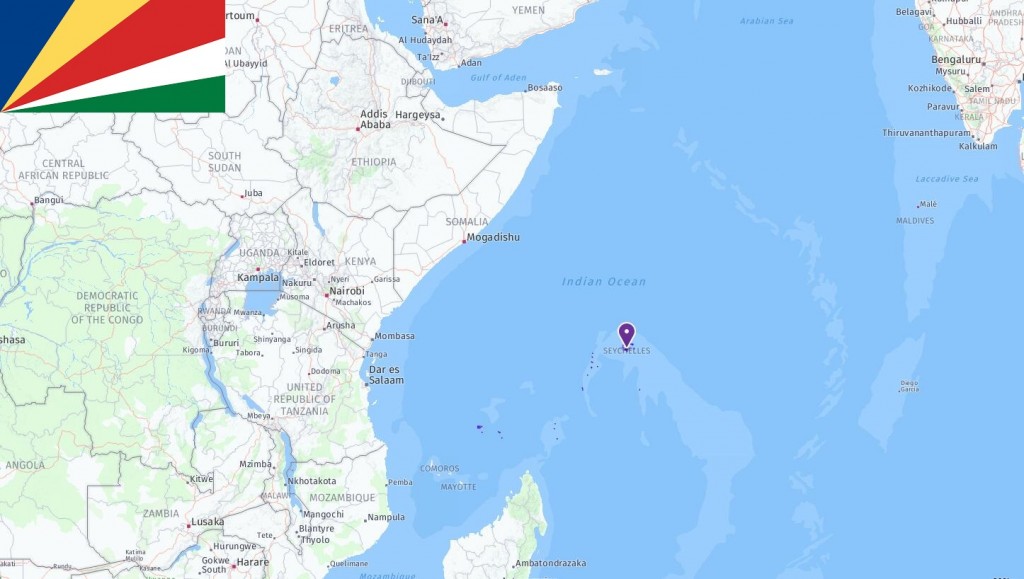SC is the abbreviation for Seychelles, the 181st largest country in the world. Officially the Republic of Seychelles, Seychelles is a country located in East Africa, bordering 4 countries – Comoros, Mauritius, Mayotte, and Réunion. Victoria is the capital city of Seychelles. Major cities include Victoria (population: 22,870), Anse Boileau (population: 4,172), Bel Ombre (population: 4,152), Beau Vallon (population: 4,131), Cascade (population: 4,077), Anse Royale (population: 3,807), Takamaka (population: 2,569), Port Glaud (population: 2,163), Anse Lazio (population: 199), and Saint Louis (population: 75).
Country Profile
- Capital: Victoria
- Language: English, French, Seychellois Creole
- Area: 459 km2
- Population: 94,217
- Currency: Seychellois rupee (SCR)
- Time zone: UTC+4
- Calling code: 248
- ISO 2-Letter Abbreviation: SC
- UN 3-Letter Abbreviation: SYC
- Internet TLD: .sc
- State Government Website:
List of Seychelles Acronyms
The most commonly used abbreviations about Seychelles are SC which stands for Seychelles and SCR which means Seychellois rupee (Seychelles currency). In the following table, you can see all acronyms related to Seychelles, including abbreviations for airport, city, school, port, government, and etc.

Geography
Seychelles consists of 115 islands divided into two islands in the Indian Ocean. The main island group, with the country’s largest island of Mahé, lies in the north. To the south lies a group of 83 coral islands, most of them uninhabited. The main islands are unique in the world as they consist of granite, and are the peaks of their own micro-continent (a small continent separated from another larger continent). The micro-continent of Seychelles located on was separated from other continents before mammals existed. Therefore, the islands have a very special flora and fauna with many species only found there. The main islands consist of mountains and hilly terrain, surrounded by narrow low lying coastal strips with sandy beaches and coral reefs. The highest point in the country is Morne Seychellois at 906 meters above sea level. The remaining 83 islands are coral islands and atolls that extend over the sea surface. The climate is tropical hot and humid all year round.
The Seychelles face few environmental challenges and have long worked to protect the unique nature of the islands. However, the low lying islands are threatened by sea level rise, while the country’s coral reefs are threatened by globally rising sea temperatures.
History
The Seychelles were uninhabited when they were discovered by European seafarers in the 16th century. The islands were probably known to Arab mariners long before Europeans discovered them, but the first documented landing was by British sailors in 1609. Until the islands were colonized by France in 1756, they were explored by several expeditions and pirates. The French founded plantations beyond the 1760s, and brought with them African slaves as labor. As a result of the Treaty of Paris in 1814, the United Kingdom was given over the islands, and in 1903 the Seychelles became a British crown colony.
The strategic location of the islands in the Indian Ocean made them important telecommunication centers during both world wars. After World War II, the colony gradually gained more independence. In 1948 a legislative assembly was elected, and in 1964 the first political parties were formed. The country was given internal autonomy in 1975 and gained full independence in 1976. Soon after independence, a political coup was implemented, and in 1979 the Seychelles became a one-party state through a constitutional amendment. The regime survived a number of coup attempts, including invasion attempts by mercenaries from South Africa in 1981. It was not until 1991 that democratic reforms were allowed that allowed other parties to run for election.
Society and politics
Seychelles is Africa’s smallest country in terms of both population and area. The country is a republic where the president has a lot of power. The president, who is also prime minister and military commander, is elected for five years at a time. The president himself chooses the government, which mainly has an advisory role. The legislative power lies with the National Assembly, which is elected every five years. The National Assembly consists of 25 elected representatives, and nine representatives from the largest political parties.
The country was ruled by the same political party from 1977 to 2016, and was a one-party state between 1979 and 1993. After 1993, politics has become more democratic and open, but the system still has major shortcomings. The country’s courts, politicians and elections are criticized for corruption and bribery.
The island state has one of the highest living standards in Africa. Almost everyone has access to clean drinking water and closed drainage systems. The state has a social insurance fund that covers residents’ pensions, and guarantees support for the disabled, long-term sick, orphans and newborns. Women and men have equal rights, and women have a strong position in society. In 2016, homosexuality was decriminalized.
Economics and Commerce
Seychelles is one of Africa’s richest countries. Since independence in 1976, the gross domestic product per capita has doubled. Unemployment is low and there is little poverty. The economy is mainly based on tourism. Tourism and the service industry make up around a quarter of the gross domestic product, and employ over 70 percent of the population. However, tourism is strictly regulated by the authorities to protect the vulnerable and unique nature. To make the most of tourism, luxury hotels and expensive resorts are focused on attracting wealthy tourists. However, the economy is vulnerable as the number of tourists is affected by the global economy, air fares and natural disasters. This became clear after the global financial crisis in 2008, when fewer tourists came to the country.
There is little of arable land in the country. They have a large trade deficit (they import more than they export), since almost all food, fuel and all industrial products are imported. Canned tuna is the most important export product, accounting for over 90 percent of export revenue.
View this article in other languages:
Deutsch – Français – 繁體中文


